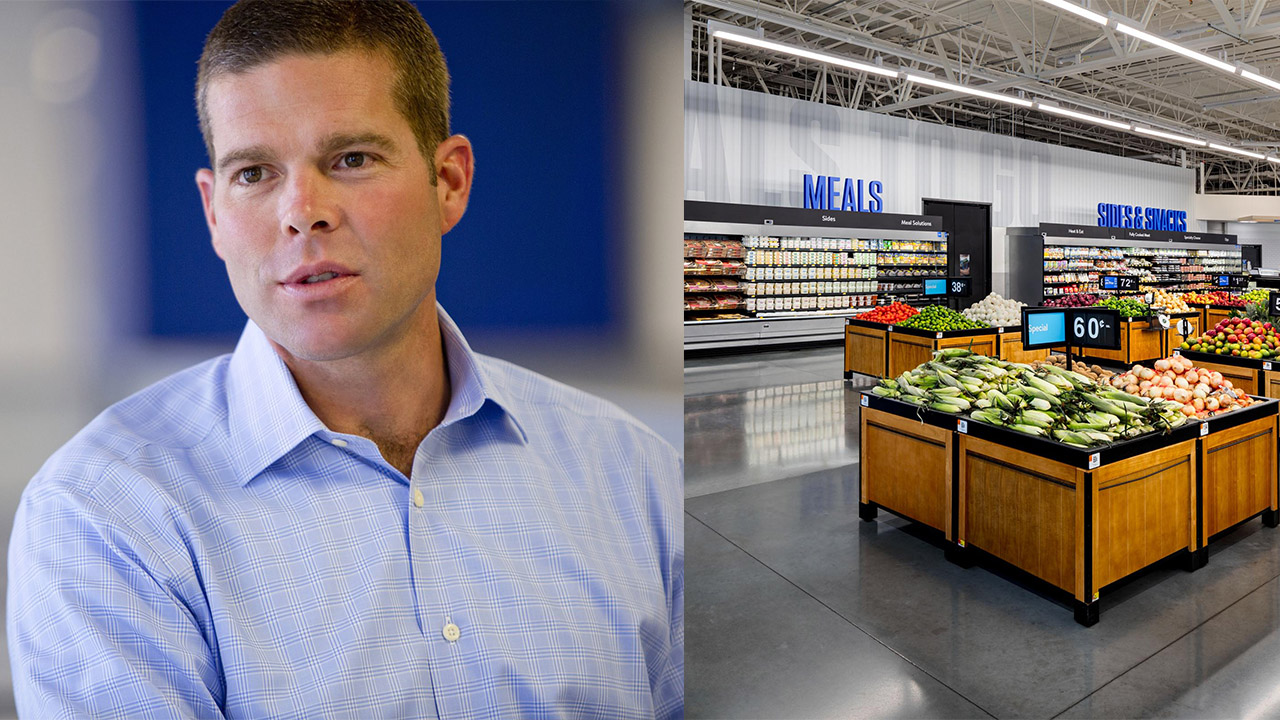On Thursday, Walmart exceeded quarterly earnings and revenue expectations thanks to significant e-commerce growth, increased profits from newer ventures like advertising, and an influx of high-income shoppers.
The retail giant announced it now anticipates reaching the high-end or slightly surpassing its previous full-year guidance. Walmart had projected net sales growth of 3% to 4% and adjusted earnings per share between $2.23 and $2.37.
Chief Financial Officer John David Rainey attributed the boost in Walmart’s grocery business to the widening price gap between cooking at home and dining at fast-food chains or restaurants.
Additionally, Rainey noted that shoppers, particularly those with higher incomes, value the convenience Walmart provides. For the first time, its delivery business surpassed store pickup in terms of volume, he mentioned.
“We’ve got customers that are coming to us more frequently than they have before and newer customers that we haven’t traditionally had, and they’re coming into a Walmart whether it’s a virtual store online, or whether it’s one of our physical stores,” he said.

Walmart’s net income surged to $5.10 billion, or 63 cents per share, compared to $1.67 billion, or 21 cents per share, in the same period last year.
Revenue increased by 6% from $152.30 billion in the previous year’s quarter, including a roughly 1% benefit from an additional selling day in the period. Walmart shares climbed about 5% in premarket trading on Thursday.
As the nation’s largest retailer and private employer, Walmart is often considered an economic indicator for the U.S. economy. It has generally performed better during inflationary times than other retailers due to its sales of essential items like groceries and its value-focused reputation.
Same-store sales for Walmart U.S. increased by 3.8%, excluding fuel. This metric includes sales from stores and clubs open for at least a year. At Sam’s Club, same-store sales rose by 4.4% year over year, excluding fuel.
E-commerce sales in the U.S. jumped 22% year over year, driven by store pickup and delivery of online orders, as well as the company’s expanding third-party marketplace.

This week brought encouraging news for Walmart and other retailers: Inflation eased in April, according to Labor Department data released on Wednesday. The consumer price index rose by 3.4% year over year. This closely watched figure tracks the cost of goods and services at the cash register.
Despite this, Walmart has observed the impact of inflation, as shoppers have been cautious with their purchases. Rainey mentioned that customers’ “wallets are still stretched.”
He said shoppers have bought fewer general merchandise items, such as home goods and electronics, as they prioritize spending on food and health-related products, a trend seen over the past several quarters.
Still, “even the low-income consumer seems to be holding in there pretty well,” he said. Rainey added that sales in general merchandise categories improved year over year.
Walmart has diversified beyond retail to increase profits and compete with rivals like Amazon. Newer ventures such as advertising and its subscription-based membership program, Walmart+, boosted profits during the quarter. The company’s global advertising business grew 24% during the quarter, with 26% growth in the U.S. segment.
Rainey noted that a third of the company’s year-over-year operating income gains came from these newer businesses.







Leave a Reply